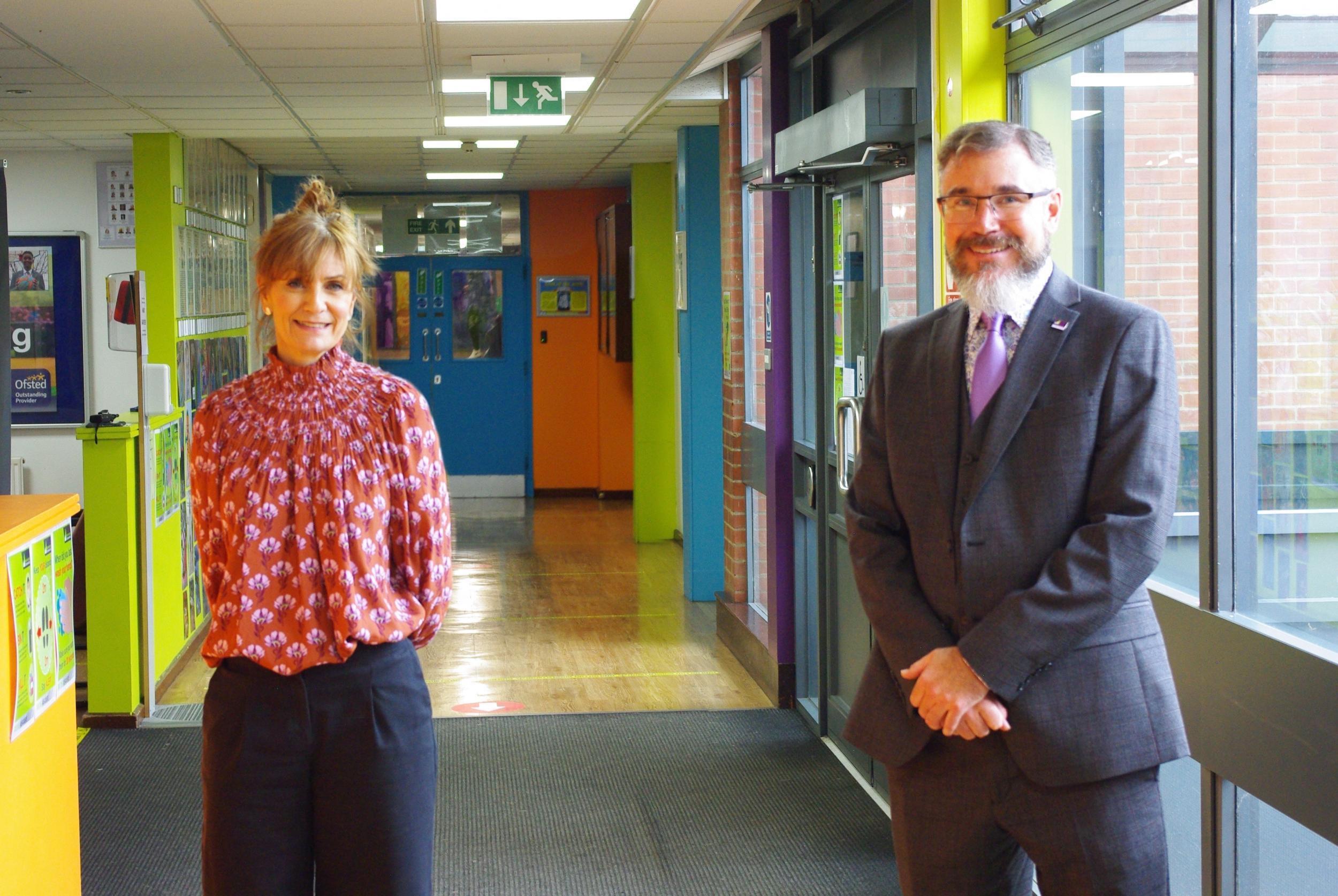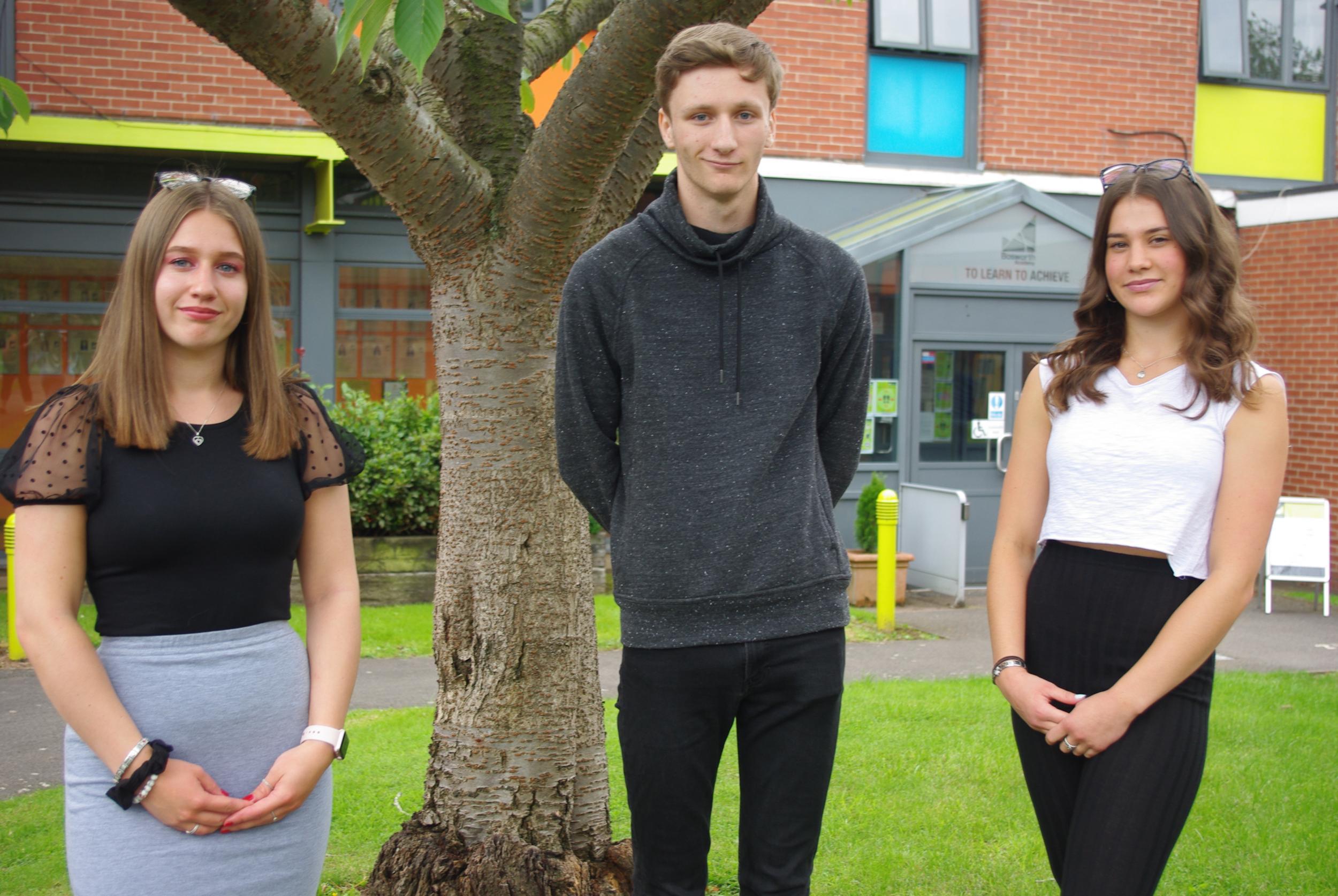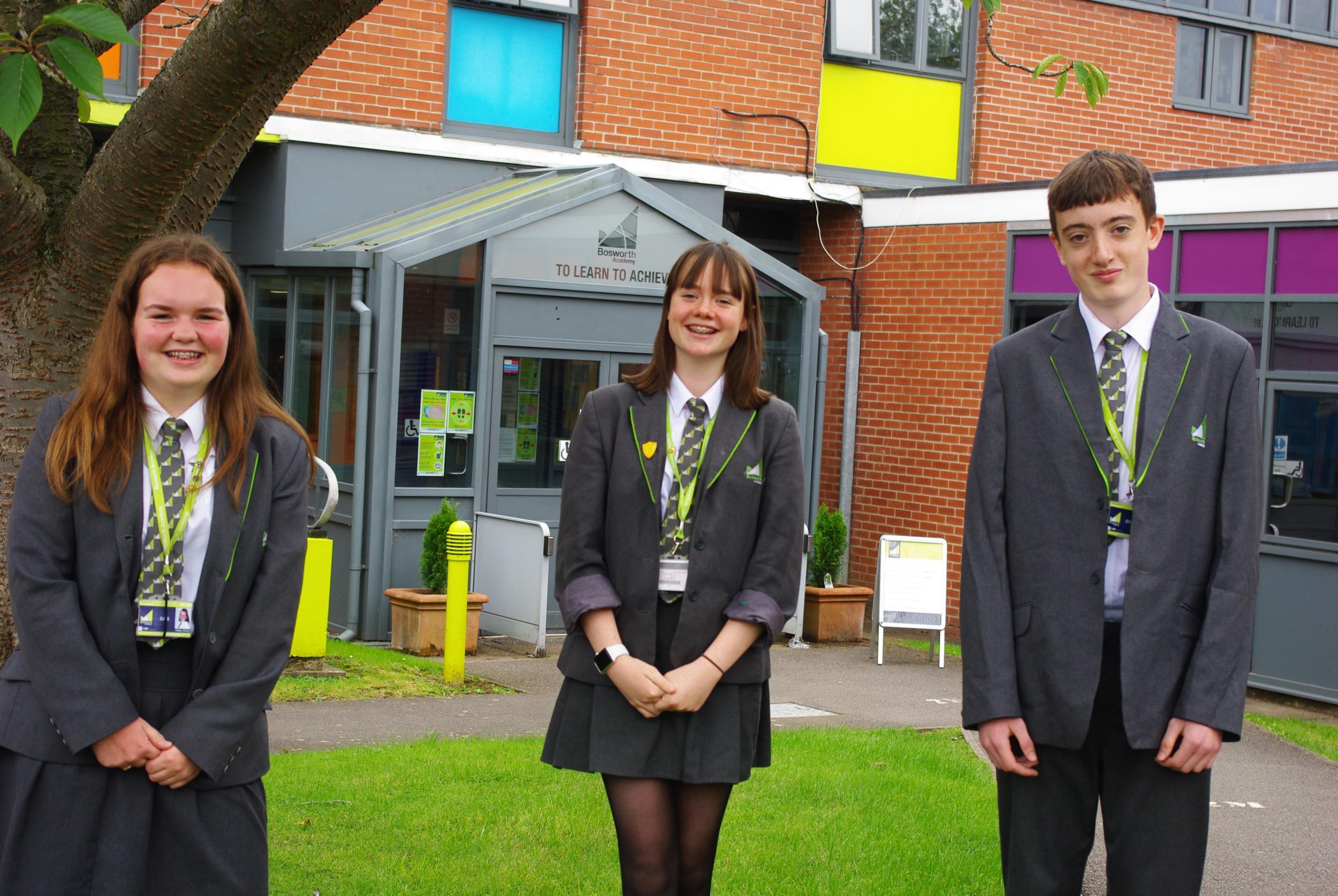Quarantined library books and boxed-in teachers: First pupils in England return to school in coronavirus era
Perspex screens in classrooms, no contact sport in PE and sanitiser everywhere – but staff and students just happy to be back

For the last couple of days Liz Mills, an English teacher at Bosworth Academy in Leicestershire, has been receiving a stream of texts from teacher friends across the country.
“They keep asking me ‘What’s it like to be back?’,” she says. “‘Is it really dystopian? Is it really horrible?’”
She and her colleagues at the school of 1,600 pupils were among the first in England to return to the classroom after the summer holidays. Which is to say, they were among the first teachers to return for a full intake of students since the world was turned upside down by coronavirus in March.
By a quirk of history, schools in Leicester and the surrounding county break up a week earlier than the rest of England and go back back a week earlier, in August.
It means the area offers the first glimpse of the new educational norms to be faced by pupils and parents everywhere else from next week: bubbles, one-way corridors, sanitiser stands and, in some classrooms, pupils separated by Perspex sheets.
“I keep texting them back to say it’s so nice to return to some normality and just to be teaching properly again and actually see pupil’s faces, other than through a screen,” says Mills. “It’s a relief. It’s a joy, if I’m honest.”
As she speaks, we are sitting by an open window looking across a courtyard in which year 11 pupils are talking, shouting and laughing at lunch. “Listen to that,” she says of suggestions that students may be nervous about their return. “Does that sound like teenagers who are terrified?”

It decidedly does not.
Perhaps the most remarkable thing about visiting Bosworth Academy is just how unremarkable many of the Covid-related changes actually feel.
“It’s pretty much just the same as before,” notes year 13 student Alice Kilby. “But with sanitiser.”
Her friend, Bethan Pottle, points out that break times are now staggered for different year groups: “So there are fewer annoying little kids running around,” she says.
The biggest visible shifts at Bosworth – which is in the village of Desford but serves a catchment area half in and half out of Leicester’s lockdown zone – are those you’d probably expect.
Year groups have been bubbled; corridors have been made one-way; and masks are to be compulsory in communal areas from next weekly. From 8.15am each day, 30 of the 90 teachers here will stand outside with sanitiser ensuring all arriving pupils clean their hands. In regular classrooms, desks have been separated and turned to face the front but in some – such as art rooms where big desks are required – Perspex has been placed between stools.
While students do not have to social distance from each other according to government guidelines, members of staff do. As such, every classroom has a marked out area which the teacher will remain throughout lessons. “I like to walk around the room so that’s a challenge,” says headteacher Simon Brown. “I feel like a caged tiger.”
Other changes? There will be no contact sport in PE, while library access has been limited with books back from loan quarantined for three days on their return. In science, experiments will be carried out by individual students rather than in groups.
“It’s vital we ensure we keep giving these practical lessons,” notes Brown. “Otherwise you have a generation of scientists who have only ever seen a test tube on video.”
In total, some £10,000 has been spent making these changes. That also includes splashing out on a whole new range of protective goggles – because the school donated all their old ones to the local NHS at the start of the pandemic.
Above all else, perhaps there is a refusal at the school – where 15 per cent of pupils are Bame and 24 per cent are entitled to free school lunches – to hide from the fact that a coronavirus outbreak may happen right here.
“It is inevitable that some schools somewhere will get some positive cases,” says Chris Parkinson, executive headteacher of the five-school LiFE Multi-Academy Trust which runs Bosworth “It’s just not statistically possible for that not to happen. So, we have spent the summer putting Plans B, C, D and E in place for all eventualities – the aim would be for the minimal disruption to the least amount of people, while keeping everyone absolutely safe.”
Such preparations includes development of its own track and trace system. If one student or teacher goes down with the bug, the claim is there will be record of everyone they have spent 15 minutes in close contact with in the two weeks prior. Any students that do have to self-isolate, meanwhile, will have a remote learning package put in place. Should there be a major virus spike and government guidelines change, there is already a contingency for going hybrid - where students could partially at school and partially from home.

So far, week one, it all seems to be going well enough.
There was 97.4 per cent attendance on the first day, which is above average in any year. More to the point, students seem happy to be here.
“I was getting so bored at home,” says Cordelia Singh-Barmi, one of five year 11 students rounded up for a socially distanced chat with The Independent. “It’s been five months since proper school. I never thought I’d say it but I missed it.”
Do they all feel safe? Apparently so. “I don’t think they’d let us back if it wasn’t,” says one, Joe Davison.
It was something science teacher Rohit Gohil also wanted to emphasise.
“Let me tell you, as someone who is four times more at risk of coronavirus, I feel the risk of being here is absolutely minimal,” he says. “If a school has taken all the right precautions, I think that’s enough; I think, as teachers, our priority now needs to be on the kids now.”
Yet amid such positivity and apparent happiness at being back, perhaps one question naturally follows. Does that mean the government got it right all along? Amid all the criticism of U-turns and exams shambles, has the Department for Education pulled it out the bag by getting pupils returned to the classroom as it promised in June?
Both Parkinson and Brown share a glance when the idea is put forward, perhaps reflecting on how official guidance on social distancing was changed only days before the annual break or the fact that 42 per cent of their school's A-Level results were downgraded by Ofqual's now infamous algorithm.
“Let’s just say this summer has not been easy and it was not made easier by having to deal with the continual changes to official guidance,” says Parkinson after a moment’s consideration. “But whatever has happened, it is crucial that, going forward, we now give this generation the best education possible.”
Join our commenting forum
Join thought-provoking conversations, follow other Independent readers and see their replies
Comments